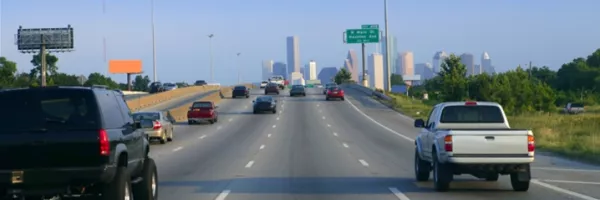
Improve Your Commute for a Happier, Healthier Life
If you’re like most Americans, your commute is a major part of your life. 86 percent of us make our trip to work by car, van, or truck, and 76 percent of us drive alone. On average, we travel about 25 minutes each way.
But the effects of our commute can extend far beyond the time we spend traveling.
Long Commutes Hurt Your Health
Studies in the United States and abroad have found that long commutes - regardless of how you’re traveling - are associated with health problems such as:
- Low levels of physical activity
- Indicators of poor physical health, such as low cardiorespiratory fitness, high BMI, and high blood pressure
- Neck and back pain
- Lack of sleep
- Anxiety
- Depression
- Social isolation
- Obesity
Those of us who commute from suburbs are also affected by the way sprawling suburbs are planned - car-centric, with residential areas placed far from businesses, and few pedestrian-friendly routes. All this means we have even fewer opportunities for physical activity and for interacting with our neighbors.
For most of us, getting rid of the commute entirely just isn’t an option. Here are some ways you can start improving yours - and feeling better, too!
What You Want Matters
A survey in Montreal, Canada found that people were the most satisfied with their commute when they were using the type of transportation they preferred to use. Satisfaction was less when commuters stated they’d rather use a different mode.
It sounds simple, and it is. Maybe you like the independence and privacy that driving your car provides, but maybe you’d rather read on the train or get your workout in on a bike. Is there a different way you could travel that you’d actually enjoy? Try it!
Get the Biggest Benefit with an Active Commute
You could get even more of a mood boost if you’re switching from driving or taking transit to walking or biking. A study in England found that commuters who started incorporating as little as ten minutes of walking time experienced a boost in well-being.
But getting started can be challenging. Here are three major obstacles - and how you can get past them.
There’s no way I can bike or walk on these streets! It’s totally unsafe!
Unfortunately, you’re not alone on this one - the lack of safe routes for biking and walking is a national problem.
Many areas lack sidewalks and crosswalks or have wide, fast-moving streets that are difficult to get across. The situation is worse in low-income areas, where people walk and bike the most. A study surveying 154 communities across the United States found that 89 percent of streets in high-income areas had sidewalks, while only 49 percent did in low-income areas.
Assess your possible routes, and see what options you have. Look for bike paths or sidewalks that could get you part of the way there, and look for transit routes that might link up with them. You can even use the Street View feature on Google Maps to see what roads really look like before trying out your route.
I don’t want to show up at work all sweaty and out of breath.
There’s a ton of information out there on how to handle this part of an active commute, from riding at a slower pace to how to tidy up quickly once you arrive.
- TheRunCommuter.com’s five-part Become a Run Commuter guide addresses this and other topics relevant to walking or bike commuters, complete with photos of organization and supplies.
- LifeHacker.com compiled some great tips from a forum discussion at the “Bicycles” StackExchange site.
- The Active Transportation Alliance, an advocacy group for biking, walking, and transit based in Chicago, provides a comprehensive, illustrated guide to dressing and packing for a ride to work.
I have to take my kids to school, and there’s just no time to walk with them every day.
Try a walking school bus! It’s a group of children walking or biking to school with one or more adults on hand to supervise. You can start with a simple “carpool” style arrangement, with two families taking turns walking kids to school. If it goes well and other families are interested, it can grow into a structured route with meeting points, a timetable, and scheduled volunteers.
For help getting started, check out WalkingSchoolBus.org.
Talk to Your Employer
Consider talking to your employer about ways to reduce or improve your commute. Maybe you can work from home sometimes, or adjust your hours so that you miss the major morning traffic and don’t have to spend so long behind the wheel.
Adjusting your schedule could also help you walk or ride in cooler parts of the day, or eliminate long waits to catch a bus or train.
Looking for More Information?
A small group of about 600,000 Americans are “mega” commuters, traveling at least 90 minutes and 50 miles each way. The New Yorker has a couple of great pieces on these brutal commutes. There and Back Again interviews several long-distance commuters of different circumstances, and Me and My Megacommute delve into the writer’s feelings about her commute and her car.
Want to get involved with pedestrian and bike advocacy? Check out this impressive list of groups at WhereTheSidewalkStarts.com.